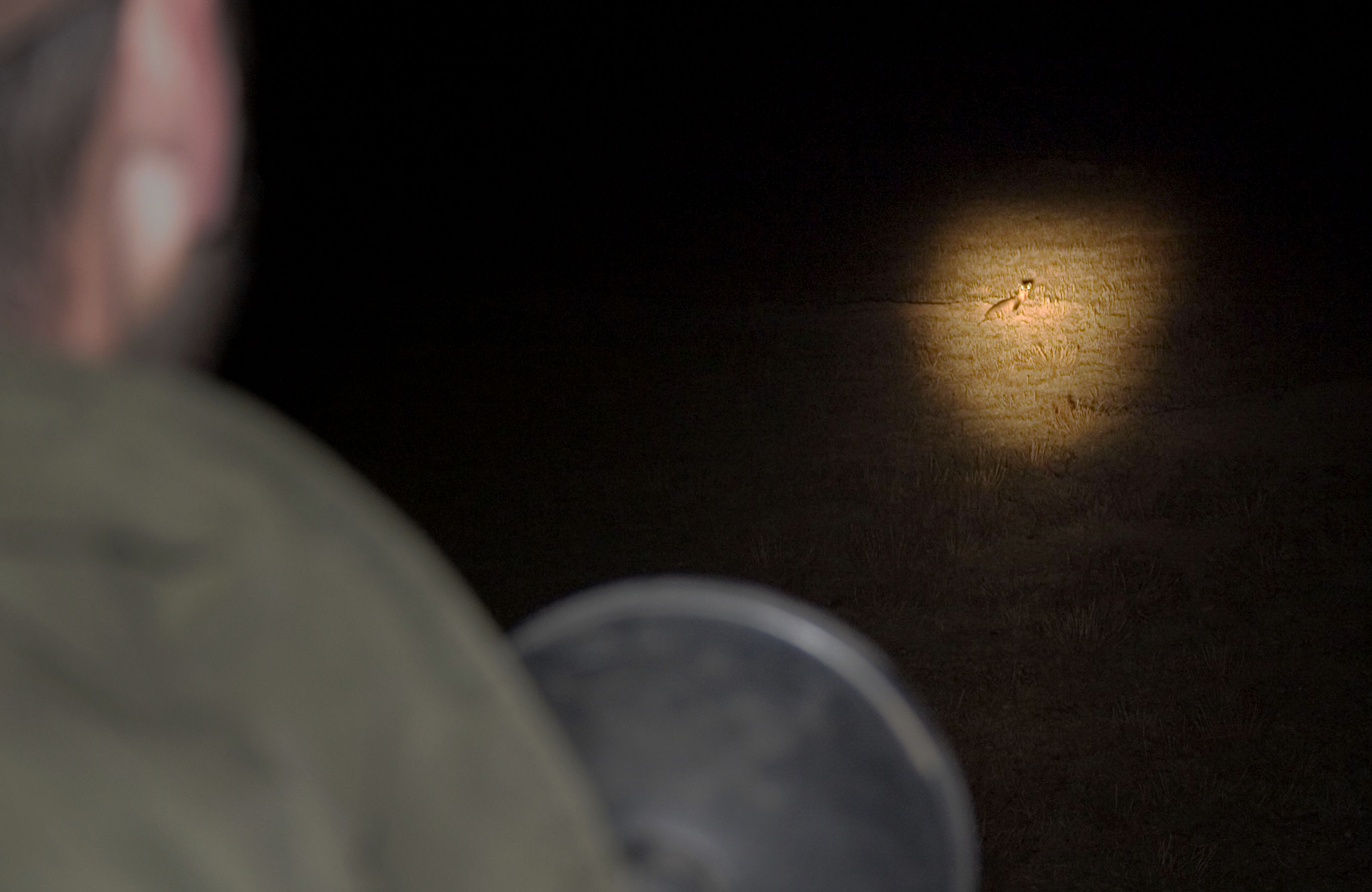Black-footed ferrets are nocturnal, and they spend most of their life below-ground in prairie dog burrows, so counting them is no easy feat! Monitoring populations of these elusive mammals requires overnight surveys on the prairie dog colonies where ferrets have been reintroduced. From sunset to sunrise in late summer, volunteers from the department and our partner agencies use high-powered spotlights to scan the prairie for ferrets’ eyeshine.
 Eyeshine is a phenomenon that occurs when light reflects off of a structure (called the tapetum lucidum) in the back of a nocturnal animal’s eye. Fortunately for us, different wildlife species have different colors of eyeshine. The black-footed ferret’s eyeshine is a unique shade of emerald green that reflects back and excites surveyors who get to see this endangered species in the wild. After seeing the ferret’s eyeshine, surveyors will attempt to live-trap the ferret so biologists can mark, count and then vaccinate it against plague and canine distemper before being releasing it back to its burrow.
Eyeshine is a phenomenon that occurs when light reflects off of a structure (called the tapetum lucidum) in the back of a nocturnal animal’s eye. Fortunately for us, different wildlife species have different colors of eyeshine. The black-footed ferret’s eyeshine is a unique shade of emerald green that reflects back and excites surveyors who get to see this endangered species in the wild. After seeing the ferret’s eyeshine, surveyors will attempt to live-trap the ferret so biologists can mark, count and then vaccinate it against plague and canine distemper before being releasing it back to its burrow.
Game and Fish conducts annual surveys to determine how many ferrets are present and reproducing in reintroduction areas near Shirley Basin and Meeteetse. The information gained from spotlight surveys is essential to determine how each ferret population is contributing to federal and state recovery goals and to determine whether additional management actions are needed to support this endangered species with a special history in Wyoming.
Game and Fish conducts annual surveys to determine how many ferrets are present and reproducing in reintroduction areas near Shirley Basin and Meeteetse. The information gained from spotlight surveys is essential to determine how each ferret population is contributing to federal and state recovery goals and to determine whether additional management actions are needed to support this endangered species with a special history in Wyoming.
Publish Date
Answered By
Dana Nelson
Job Title
Nongame biologist
Photo
dana_ferret
Ask Game ID
201
Node order
109
Parent Node
1135
